I was originally going to write about the ballistics responsible for sparing the life of Representative Giffords tonight, but decided that some might feel that to be offensive. Please indicate in comments whether or not you think that this would be an acceptable topic. The piece is very interesting (the draft is in the can), but I leave it to my readers to determine whether it should see the light of day.
The topic tonight is the physics behind cooking, in the meaning that how heat is added to food makes a huge difference in the rate of cooking, the taste of the final product, and even its texture.
There are several ways to put the required heat into food to cook it. In no particular order, they include boiling, steaming, frying, roasting, broiling, and by the use of microwaves.
When food is boiled, the heat from water surrounding the food is directly transferred to the food. Even though boiling food is a low temperature method, it is extremely efficient because almost all of the energy is transferred by conduction, and conduction is fast. I say that it is a low temperature method, because the food can not get above the boiling point of the water, 100 C or 212 F at sea level. Simmering is similar to boiling, but at a temperature just below the boil, so it is not quite as fast. Boiling also has some other features that other methods do not.
First, it is impossible to dry food out by boiling it, so it can be a good method for foods that tend to be dry in the first place. Second, it is impossible to burn food at the boil. However, some foods do not take to boiling very well and turn mushy. In addition, since the temperature is low, it is only in very rare circumstances that the flavor and color producing Maillard reactions can occur at these temperatures. Also, boiling can leach out flavors, water soluble nutrients, and colors, rendering food less nutritious and flavorful, and with less eye appeal than some other methods.
On the other hand, boiling is an excellent method for foods that tend to be tough, as the cellular structures that make food tough are gradually broken down by long contact with boiling water. As I said before, the primary mechanism for heat transfer is directly from the hot water to the food.
Steaming is sort of a variant of boiling, but with some significant differences. Whereas in boiling the heat from the burner heats up the water and the water directly contacts the food, in steaming the water is vaporized to steam and this steam condenses on the food, transferring the energy. Now, it turns out that for every gram molecular weight (mole) of water that condenses on the food transfers, 40.65 kJ/mol is transferred. In steaming, the heat is transferred also by conduction, but this time by a gas, steam, so the transfer is not as fast. This is why steaming is looked on as a more gentle way of cooking in comparison with boiling.
Another advantage to steaming for many foods is that less dilution of nutrients, flavors, and colors occurs than with boiling. Food also tends to be less mushy when steamed than when boiled in many cases. Steamed asparagus, for example, has a firmer texture and better color than boiled asparagus, and is also sweeter. For foods that need the long cooking that boiling provides to soften tough tissues steaming is an inferior process.
The big brother of boiling is pressure cooking. In this variant, food is placed in a pressure vessel along with water and brought to the boil. The pressure vessel has some mechanism for regulating the internal pressure or a gauge so that you can regulate it by burner control. For example, at 15 psi internal pressure, the boiling point of water is 250 F. In addition, little energy is lost by boiling off the water since he system is pretty much sealed. Things that take hours to cook on water can cook in a pressure cooker in minutes. The handle on my Mirro-Matic pressure pan says that spare ribs will cook in 20 minutes at 10 psi.
In addition to cooking faster, tough tissue becomes tender much faster in the pressure pan because of the higher temperature breaking down the structure of it at a higher rate of speed. On the other hand, foods that tend to go mushy pretty much are devoid of any structure when pressure cooked.
Depending on how much water is in the pressure pan, pressure cooking can be either like boiling or steaming, but on steroids. People who live in extremely high altitudes often use the pressure pan to boil food, because the lower pressure at high altitude reduces the boiling point to a point where tougher foods take an inordinate amount of time to cook.
Finally, a hybrid between boiling and steaming is braising, where food is placed in a pan, water added to cover part of the food (for very moist foods the natural water in them may be enough), and simmered either on a burner or in the oven. Pot roast is an example. Since the limited amount of water does not dilute nutrients and flavor so much, and the slow, moist cooking over time disrupts tough tissues, it is ideal for tougher cuts of meat. The reason that you do not add the vegetables until later is that they would be “cooked to death”, and my grandmum used to say, before the meat became tender.
Frying is another cooking method in which the predominant mechanism for heat transfer is conduction. That, and the fact that a typical frying temperature is around 375 F or more is why frying cooks relatively tender foods so fast. Frying is no good for really tough foods, because there is no time for tough tissues to be disrupted. As a matter of fact, the very high temperatures can make even tender foods tough, especially foods high in protein. Just about everyone who has fried fish knows that just a little bit of overcooking can transform what would have been a juicy on the outside and moist and tender on the inside delight to a dried out, tough, flavorless disaster. Fish is particularly susceptible to overcooking by frying due to the nature of its protein.
The variants of frying include deep frying, where the fat is deep enough for the food to be completely covered (fast food French fries are almost always deep fried), pan frying, where only enough fat is in the pan to come up about halfway on the food, and stir frying, with is really the same as sauteing, except for the amount of movement that the cook imparts to the food. In sauteing, only a very small amount of fat is added to the pan, just enough to keep the food from sticking. Sauteed foods and turned occasionally to prevent burning, where stir fried foods are rapidly turned, sometimes constantly.
One thing that frying does that boiling can not is to develop rich flavors and beautiful brown colors by the Maillard reactions, which almost always require high temperatures to occur. These reactions are betwixt carbohydrates and proteins in the food, and the browning of potato chips is an example. Whilst a boiled potato tastes much like a raw one except more refined, a potato chip tastes nothing like a raw potato.
The last fully conductive method of cooking is pan broiling, which is really like sauteing except that usually when we talk about pan broiling we usually are talking about something like a steak. The mechanism is the same.
Roasting is quite different than boiling or frying, particularly in the mechanism of heat transfer. Baking is pretty much the same as roasting, except for the foods that are cooked. There is really little difference in a technical sense, so I shall use the term roasting for both. In roasting, heat is transferred mostly by convection of hot air around the food (or the pan) rather than conduction. Roasting is very slow compared to the conduction methods because convection transfers heat only slowly. Now, there is some conduction in roasting, but because of the low heat capacity of air, that is not a lot. Think of it this way:
If you put your hand into a 375 F oven, it feels warm, but you can hold it there for quite a while before it becomes uncomfortable. However, if you dip your hand into a deep fryer at the same temperature, you are instantly and severely burnt. This has to do with the relative efficiency of the heat transfer.
Roasting usually implies that the food is not immersed in water whilst in the oven, differing from pot roasting which is really braising. Thus, it is a dry cooking technique and foods that are dry by nature are not often very good candidates for roasting. However, it is ideal for tender cuts of meat, many moist vegetables, and of course breads that have lots of water in the batter or dough. Roasting also allows for Maillard reactions, due the the high temperatures at the surface of the food. Since the heat penetrates slowly, the surface can get hot enough to brown nicely before the interior is incinerated.
With large pieces of meat, like roasts and fowl, it is important to remove them from the oven before they are “done”, as determined by a thermometer. This is because the parts of the food nearer the surface are much hotter than the parts in the center, and if left in the oven until the center is up to temperature, the hotter outer parts will keep cooking it past prime. This happens fast, because the center is really being heated by conduction of heat from the outer parts. If you wonder why your roasts are always more done than you planned, or that your turkey is overcooked, now you know why. Take them out of the oven, plate them, and cover with a piece of foil and a clean towel to let the center come to temperature without the outer parts getting cold. Depending on the food, this may take from a few minutes to half an hour. A large bird is closer to the half hour time.
Broiling food delivers the heat by a completely different mechanism, this time by radiation. In a broiler, the food is exposed directly to radiation from the heating element, cooking the surface rapidly. By the way, you should leave your over door ajar when broiling because if you close it, you are also roasting it and it gets overdone really fast. The reason that you put the food close to the element is that radiation follows an inverse r squared law (you knew that I would get Geeky!), so that if the distance from the element to the food is doubled, the amount of energy is reduced by three quarters.
Broiling is excellent for tender foods that do not need a lot of cooking at the center (chicken is the exception, and must be broiled a little further from the element to cook to the middle without burning on the outside). Broiling is NOT good for thick cuts of meat or large vegetables because they will burn on the outside and still be raw in the center. About the thickest thing that can be broiled successfully is on the order of a split chicken, and you have to be careful with that. Since it is a fast cooking method, there is not time for much tenderization, so broiling is no good for tough foods
Related to broiling is grilling. The fundamental difference is that in broiling the heat is assumed to be applied to the upper surface of the food, whilst in grilling the custom is to apply it the the bottom of the food. However, there are in practice some other differences oftentimes. If grilling is done directly over hot coals or over the lava rock in a gas grill with the lid open, it is pretty much the same as broiling. But close the lid and you are also roasting AND broiling. This actually can have advantages, depending on the food.
One significant difference betwixt the methods is that in grilling, the food is usually exposed to smoke from dripping fat if we are talking about meat. This adds flavors not usually found in broiled meats, but also introduces some fairly noxious pyrolysis products from the fat hitting the hot surfaces. I recommend that grilling be done carefully to minimize formation of these compounds. One way to do this is to use indirect heat (lid down, heat source not directly below the meat), but this is really roasting technically. Over direct heat it is just sort of hard to keep the fat from dripping on the coals and smoking. People have all kinds of ways to minimize that, including putting foil on the grill to catch the fat, standing by with the water spritzer, or other methods that are not really very effective.
About the only way to prevent the fat from pyrolyzing and still use direct heat just about requires charcoal, since gas grills are really cooking with hot air for the most part. You can build a really large bed of coals on one side of the grill and cook the meat right next, but not quite over, the coals. The radiation will still reach the food, but the fat falls to the bottom of the cooker without hitting the hot coals. This is technically using direct heat, since you are cooking with radiation rather than hot combustion products, but the geometry is such that the fat stays off of the coals. It takes a lot of fuel, though, because of the inverse r law. I think that the best compromise is just to enjoy grilled meats upon occasion, not every day.
Finally, there is cooking with microwaves. Some people are sort of hesitant to use microwave ovens, thinking that the radiation is like the dangerous kind in X-rays and the like (hence the completely incorrect term “nuking” the food). I wrote a piece about microwave ovens some time ago, but here is the short version.
Microwaves occupy the part of the electromagnetic spectrum with a wavelength from about 1 mm to 30 cm. This corresponds to energies of one milli electron volt (meV) or less. Visible light has a wavelength centered around 600 nanometers, for an energy of around 3 or four electron volts (eV). Radiation starts to get dangerous at around 300 nm, around 10 eV for UV, and X-rays are around 100 picometers, or 12.4 thousand electron volts (keV). Gamma rays, the only truly nuclear ones, are around 1 picometer, with an energy in the millions of electron volts (MeV). Thus, microwaves are around one trillionth the energy of gamma rays, photon for photon, and only around one thousandth the energy of visible light! Thus, except for local heating effects, microwaves will not hurt you and they can not possibly make food radioactive.
Microwaves work to heat food by making polar molecules, or pieces of them, rotate. Water is the most common molecule, polar or not, in food, and water is very polar. Fat also has a polar piece on its molecules, and sugars and starches are also polar. It is water that is mostly responsible for the heating effect, but as bacon cooks the fats in it keep it getting hotter.
When you cook with microwaves (except for very fatty or sugary foods), you are merely making the water molecules in the food rotate faster and faster. This causes them to bump into other molecules, and the food get hot from the energy imparted. It is a purely radiative method, but like other cooking methods once the outside gets hot there is conduction towards the interior. Microwaves do NOT cook food from the inside out, and is commonly thought. They only penetrate a centimeter or two at most.
Since microwaves for the most part just heat the water in foods, they do not do a very good job at browning. You CAN cook a turkey in the microwave oven, but with no Maillard reactions it will be a pretty sad affair. Bacon browns because it has so much fat that, after most of the water evaporates, it can get hot enough to trigger these reactions.
Microwave ovens sometimes have electric browning elements in them to brown the food after cooking (if you brown it first, it gets soggy as the rest of the food cooks). Another trick to brown food is to use microwave dense cookware. Most ordinary glass and plastic is transparent to microwaves, the they stay cool except for the heat conducted into them from the hot food. With microwave dense cookware, the cookware itself is heated by the microwaves, and being water free, get hot enough to brown the food, but only where it is in contact with the cookware. Some frozen foods, particularly pot pies and such, are packaged in paperboard products treated to make it microwave dense, so it gets hot enough to brown the crust. In the brand of pot pie that I eat sometimes, the pan is microwave dense and the top of the box is also, so the instructions say to open the box to allow moisture to escape, but leave the pie in the box so that the top will brown.
Microwave ovens are extremely efficient, since only the food, for the most part, gets hot, so no energy is wasted heating up an oven, a skillet, or the like. They are great for many foods, and horrible for others. I use mine every day to make my afternoon cup of tea, putting my somewhat scratched teacup (this is important; ask why or add your theory in the comments) in it, full of water, and blasting it until the water boils. Then in goes the tea bag, either green or black, depending on my mood, and four and one half minutes later is the perfect cup of tea. They are also wonderful for warming up foods that do not need to be crisp, since only the water gets hot and something like leftover fried chicken just gets soggy. You can have the best of both worlds by warming up crispy leftovers in the microwave oven, then popping them into the toaster oven to recrisp the outside. It does not get as dried out as it would in the toaster oven alone, and you save energy because the toaster oven only has to be at temperature for a couple of minutes.
No discussion of microwave cooking would be complete without talking about popcorn. Most folks think that popcorn is dry, but under that tough cuticle is a center that is quite high in water. When popcorn is put in the microwave oven, the water in the center begins to heat, cooking the starch in the kernel. When the pressure inside the kernel reaches around 100 psi, the hull fails, and the steam explosively expands, making the starch form the familiar “popped” corn. You can pop your own corn, saving lots of money.
Commercially prepared microwave popcorn is expensive, loaded with fat, in many cases the very unhealthful trans kind, and way too salty. Here is how to make your own: Take a kraft paper lunch bag (available in bundles of 50 for about 50 cents) and add 1/4 cup of popcorn to it. A big bag of popcorn can be had for a dollar. Take a standard desk stapler, fold the top of the bag over about an inch, and staple it shut with two staples, equidistant. Put in the microwave over, set it to high, and pop it until only a pop every couple of seconds happens. Take it out, open it, pour the popped corn into a bowl, and treat with whatever seasonings that you like. This popcorn is not very “sticky”, so salt sort of falls off of it. You can add a couple of teaspoons of canola oil to the bag before you pop it if you want salt to stick.
But, Doc, you just put metal in the microwave oven! Don’t EVER do that. Relax. Because of the wavelength of the microwaves used in the oven, a standard staple is completely noninteracting with them. No worries!
Well, you have done it again! You have wasted many einsteins of photons reading this unappetizing piece. And even though Curtis Sliwa stops being a loudmouthed, belligerent, rude bully when he reads me say it, I always learn much more than I could possibly hope to teach by writing this series. Thus, please keep those comments, questions, corrections, and other feedback coming. I will stick around as long as comments warrant, and will return tomorrow around nine PM eastern for Review Time.
Tonight I have a special request, and it strictly financial. If you have, or know of someone who has any scientific writing, review, or consulting gigs, please contact me. I need the income. This is the first and last time that I will use this mechanism to ask for work.
Please think about whether or not I should post about what was to the be the topic tonight, as described in the introduction. Your input will determine if I post it.
Warmest regards,
Doc
Crossposted at Docudharma.com and at Dailykos.com

 On this day in 1848, A millwright named James Marshall
On this day in 1848, A millwright named James Marshall 

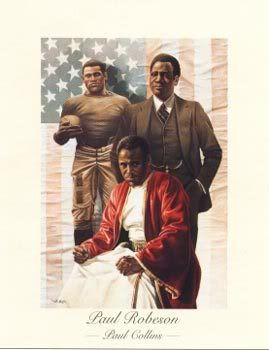
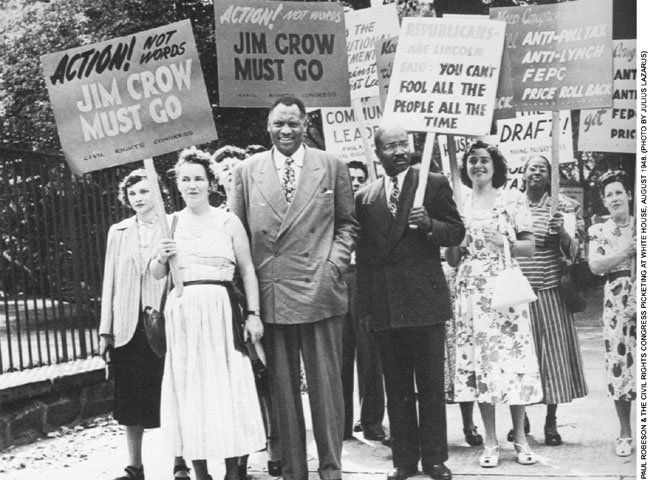
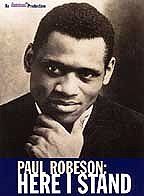
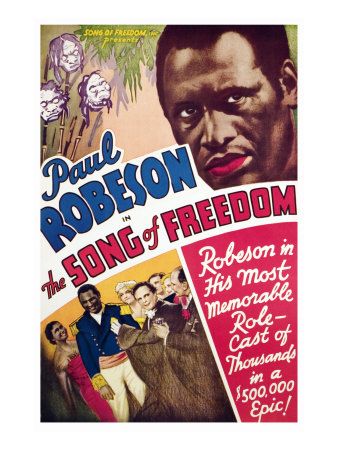

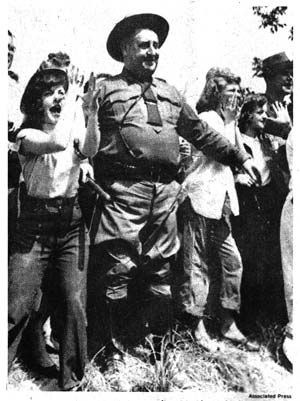



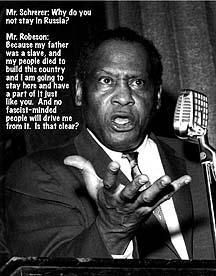



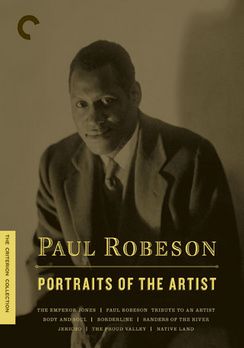


Recent Comments